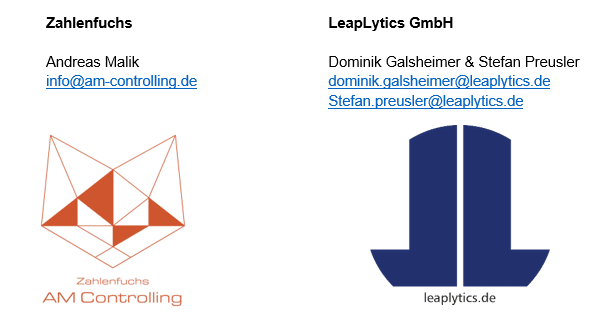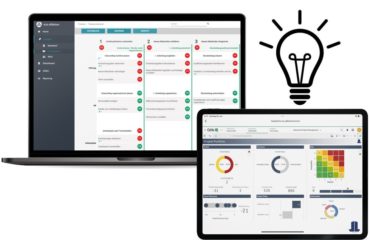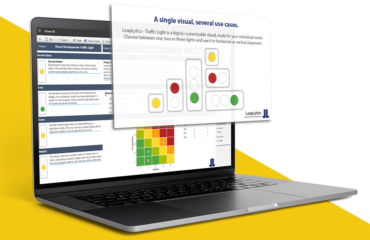Geleceği bilenler oyunun önündedir! 3 bölümden oluşan makalemizde İş Zekasının neden özellikle küçük ve orta ölçekli işletmeler (KOBİ'ler) için önemli olduğunu, ilk adımın aslında ne kadar zor olduğunu, ancak aynı zamanda temel avantajların neler olduğunu ve tüm konuya verimli bir şekilde nasıl yaklaşabileceğinizi okuyun. KOBİ kontrol ve yönetim uzmanı Andreas Malik'in yanı sıra iş zekası uzmanları ve Power BI ve Qlik Sense alanında önde gelen veri görselleştirme ve dashboard sağlayıcılarından birinin kurucuları Stefan Preusler ve Dominik Galsheimer, deneyimleri ve uzmanlık bilgileriyle makale serisinin bu 3 heyecan verici bölümünde size rehberlik edecek. İlk bölümde, İş Zekası ve KOBİ'lerin neden birlikte iyi gittiğine bakıyoruz. İkinci bölüm, avantajları net bir şekilde tanımlamak ve böylece başlamak için doğru zamanı bulmakla ilgilidir. Üçüncü bölüm ise uygulama ve giriş için önemli ilk adımları gösteriyor
Bölüm 1: İş zekası ve KOBİ'ler neden birlikte iyi gider?
Kriz, savaş ve iş ortamının her zamankinden daha hızlı değiştiği dönemlerde şirketlerin erken tepki vermesi önemlidir.
Bu zorlukların üstesinden gelmek için, tüm iş süreçlerine ilişkin verileri anlamlı bir şekilde özetlemek ve kararla ilgili bilgilerin hazırlanması için gereken süreyi mümkün olduğunca düşük tutmak amacıyla analiz etmek gerekir. Bu görev, İş Zekası (BI) olarak adlandırılan yöntemle gerçekleştirilir. BI, verilerin sistematik analizine yönelik yöntem ve süreçler için kullanılan kolektif bir terimdir.
Birkaç yıl öncesine kadar İş Zekası büyük şirketler için ayrılmıştı. Özellikle BI çözümlerinin yüksek maliyetleri nedeniyle İş Zekası orta ölçekli işletmeler için ilgi çekici değildi. Ancak geçen zaman içinde İş Zekası küçük ve orta ölçekli işletmelere (KOBİ'ler) de ulaştı. Peki ama bu KOBİ'ler nasıl tanımlanıyor?
Çoğu için çok küçük işletmeler (AB tanımı <10 çalışan ciro <2 milyon EUR yıllık) veri modeli yönetilebilir ve MS-Excel ile eşleştirilir. Burada, seçilen temel değerler ve anahtar rakamlar aylık varyans analizi için genellikle yeterlidir. Sunum, kar/zarar tablosu, bilanço ve likidite verilerini içeren bir DIN-A4 sayfasında yapılır. Ayrıca sipariş durumu, verimlilik (veya kapasite kullanımı) ve genel piyasa olayları hakkında bilgiler sunulur.
İçinde küçük şi̇rketler (10 - 50 çalışan, yıllık 2 - 10 milyon Euro satış), kontrol sistemi biraz daha kapsamlıdır. Daha fazla temel rakam ve varyans analizine ek olarak, genellikle bir ön izleme/tahmin de vardır.
Bu durumda orta ölçekli şirketler (50 - 250 çalışan, yıllık 10 - 50 milyon Euro satış), ayrıntılı değerler, temel rakamlar ve analizlerin yanı sıra gelecekle ilgili bilgiler de dikkate alınır. Bu sayede dengeli ve net bir bilgi yoğunluğuna odaklanılmaktadır.
İş zekası çözümleri hazır sistemler değildir; şirkete özel olarak kurulurlar (kişiselleştirme). Şirketin ilgili gereksinimleri dikkate alınarak tasarlanır. Dikkatli tasarım, bir BI sisteminin faydaları ve pratikliği için çok önemlidir.
İş zekası anlayışı veya "Müşteri kokpitinde hangi analizi görebilir?"
- İlk adımda, gelecekteki iş zekasının şirkete özgü hedefi tanımlanmalıdır. Bu amaçla, girişimci/kontrolör sonuçta hangi kilit rakamlara ve değerlendirmelere sahip olmak istediğini formüle etmelidir.
- Bir sonraki adımda, bu gereksinimler rafine edilir ve somutlaştırılır. 3.
- Temel rakamları/bilgileri elde etmek için hangi verilerin halihazırda mevcut olduğu ve hangilerinin hala gerekli olduğu incelenmelidir. Veri kaynakları açıklığa kavuşturulmalıdır.
- Raporlama sistemi, önceden tanımlanmış temel rakamlar ve analizler temelinde tasarlanmıştır.
- Çeşitli kaynaklardan ilgili verileri bağlama (veri ambarı kurma).
- Veri tabanının istenen raporlama sistemi ile ilişkilendirilmesi.
- Sonuç: şirkete özel kokpit
Excel'e karşı bir BI sistemi veya "Excel'den bir BI sistemine ne zaman geçmeliyim?"
MS-Excel ile günümüzde birçok analiz yapabilir ve küçük otomasyonlar (VBA makroları) oluşturabilirsiniz. Avantajları, her şirkette mevcut olması, hızlı bir şekilde uygulanabilmesi ve aynı zamanda ucuz olmasıdır.
- Olarak çok küçük işletmelerbu genellikle yeterlidir. Burada, bu değerlendirmelerin şirketi başarılı bir şekilde yönetmek için yeterli olup olmadığını bir kontrol uzmanının yardımıyla belirlemek mantıklı olabilir.
- Olarak küçük şi̇rketKurumsal yönetim için Excel tabanlı değerlendirmeler hızla sınırlarına ulaşır. Yüksek manuel harcamalar hataya açık, zaman alıcı ve tek boyutludur. Bu noktada iş zekasının avantajlarını incelemek mantıklı olacaktır. Bunun en kolay yolu bağlayıcı olmayan bir danışma görüşmesi düzenlemektir.
- Olarak orta ölçekli şirketBir işletme olarak başarılı bir şekilde faaliyet gösterebilmek için bir BI sistemine sahip olmak şarttır. Tamamen MS-Excel tabanlı bir sistemle çok fazla zaman ve para harcarsınız.
Yazı dizisinin ikinci bölümü önümüzdeki hafta yayınlanacak. Burada iş zekasını tanıtmak için doğru zamanı belirlemenin neden zor olduğunu ve bu görevde nasıl ustalaşabileceğinizi okuyabilirsiniz.
Başka sorularınız için hizmetinizdeyiz:








